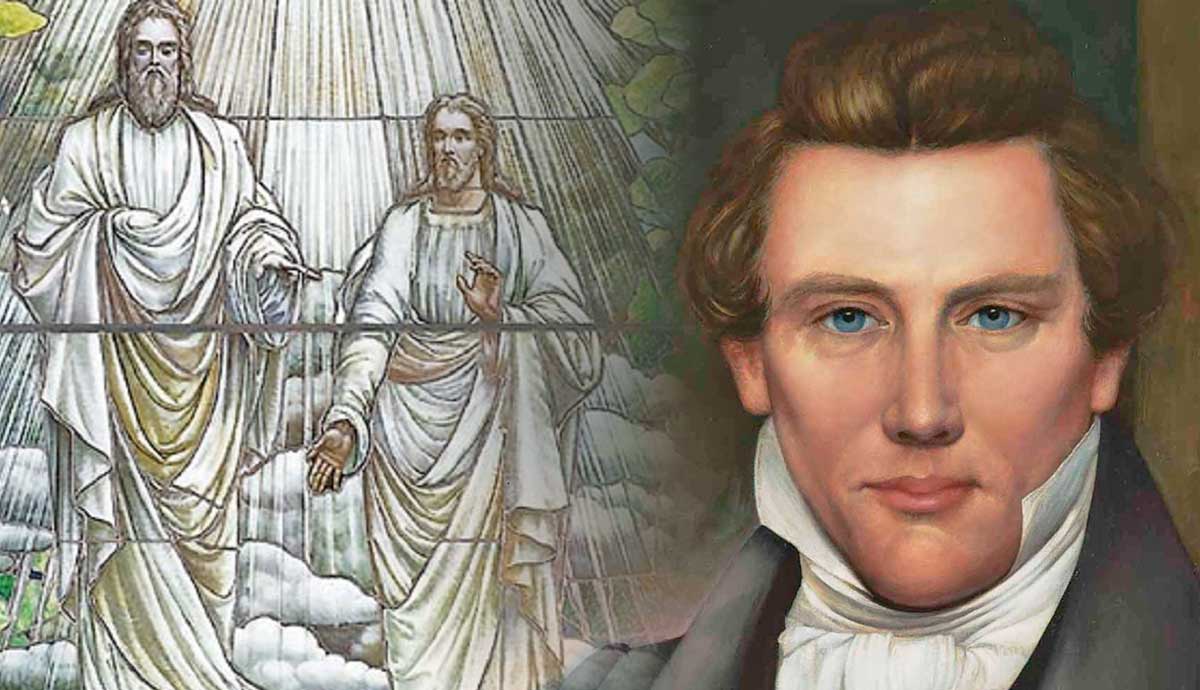
The journey between San Diego, California and National Glacier Park, Montana is filled with the bright lights of Las Vegas, Nevada, Salt Lake City, Utah, and the wondrous mountains and parks of Yellowstone and Jackson Hole in Wyoming. But along the way are small places of great historical significance: forts, mansions, homes, and massacre sites that tell tales of settlers changing the US landscape 200 years ago, impacting the lives of Native Americans who have called America home for centuries. Take a journey across six states and discover the stories of America’s recent history.
1. Old Las Vegas Mormon Fort State Historic Park, Nevada
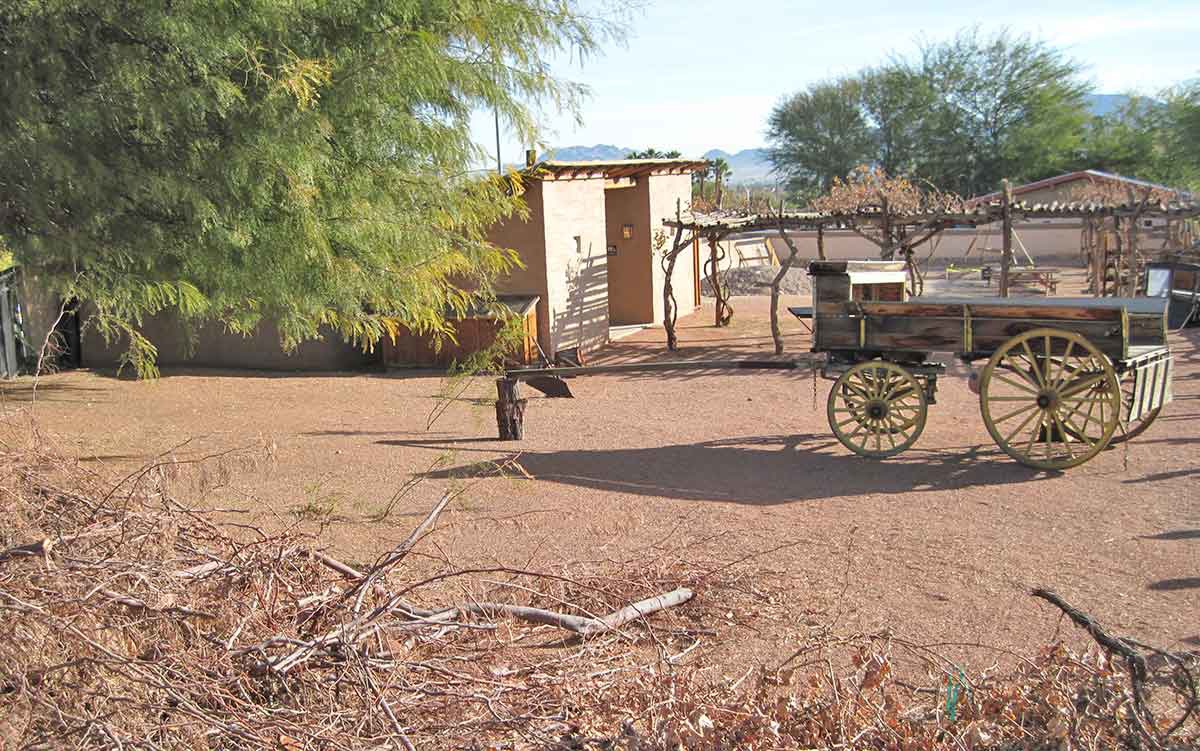
The first stop out of San Diego will take five to six hours to reach. After passing the Mojave National Preserve and crossing the state line into Nevada, you’ll arrive at the Old Las Vegas Mormon Fort, built by Mormon missionaries in 1855. It was the first permanent non-native settlement in the Las Vegas Valley. It was purposefully built alongside a spring-fed creek, and today, the remains of the adobe fort, as well as other historic artifacts, including historic wagons, can be viewed at the site.
After its original construction, the site attracted traders, gold seekers, emigrants, and the native Indigenous group Paiute. Many traveling to California along the Old Spanish Trail would stop at the fort. Built with adobe bricks and consisting of two bastions and four walls 150 feet long, the fort has undergone excavations to reveal a range of items that are thought to be of Anasazi and Paiute origin.
The site is managed by the Mormon Church and includes a small museum. It is open year-round.
2. Ancestor Square, St. George, Utah
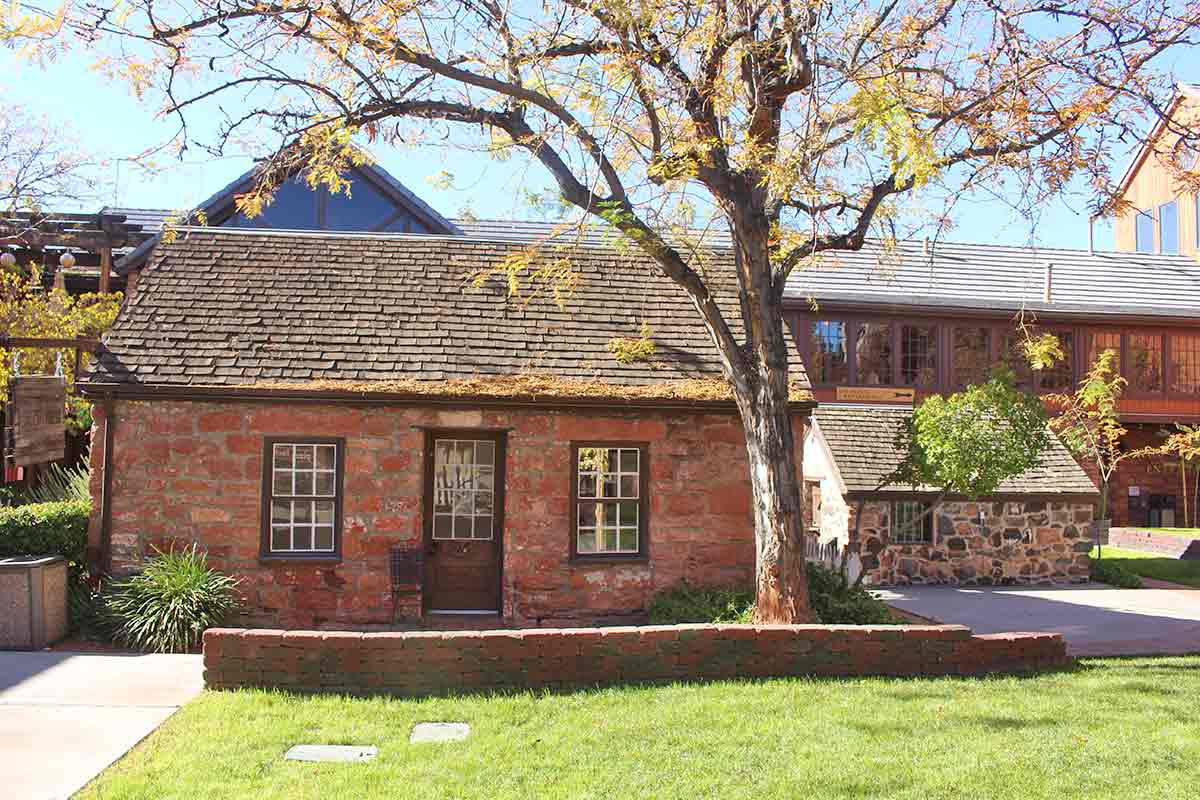
Two hours northeast of the Old Las Vegas Mormon Fort in Nevada, you’ll arrive in Ancestor Square in the southeastern tip of Utah. Ancestor Square is a cluster of buildings in the heart of St. George. Founded by Mormon pioneers in 1847 and led by a man called Brigham Young, St George is described as the “art and soul” of Utah.
One of the smallest buildings but perhaps most interesting is the Jailhouse, thought to have been built by Sheriff Hardy around 1880. In addition to the Jailhouse, it is possible to visit the home of Brigham and Amelia Young, where President Brigham Young resided between 1870 and 1877 during winter. There is also the Tabernacle, built in 1867, which now serves as an event venue, an Old Courthouse built in 1876, which now houses the St. George Chamber of Commerce, and the Opera House, built in 1913, which is now a museum.
The area is quaint and also contains shops, cafés, and restaurants. Many of the old buildings offer tours, such as the former home of Brigham Young.
3. Cove Fort, Utah
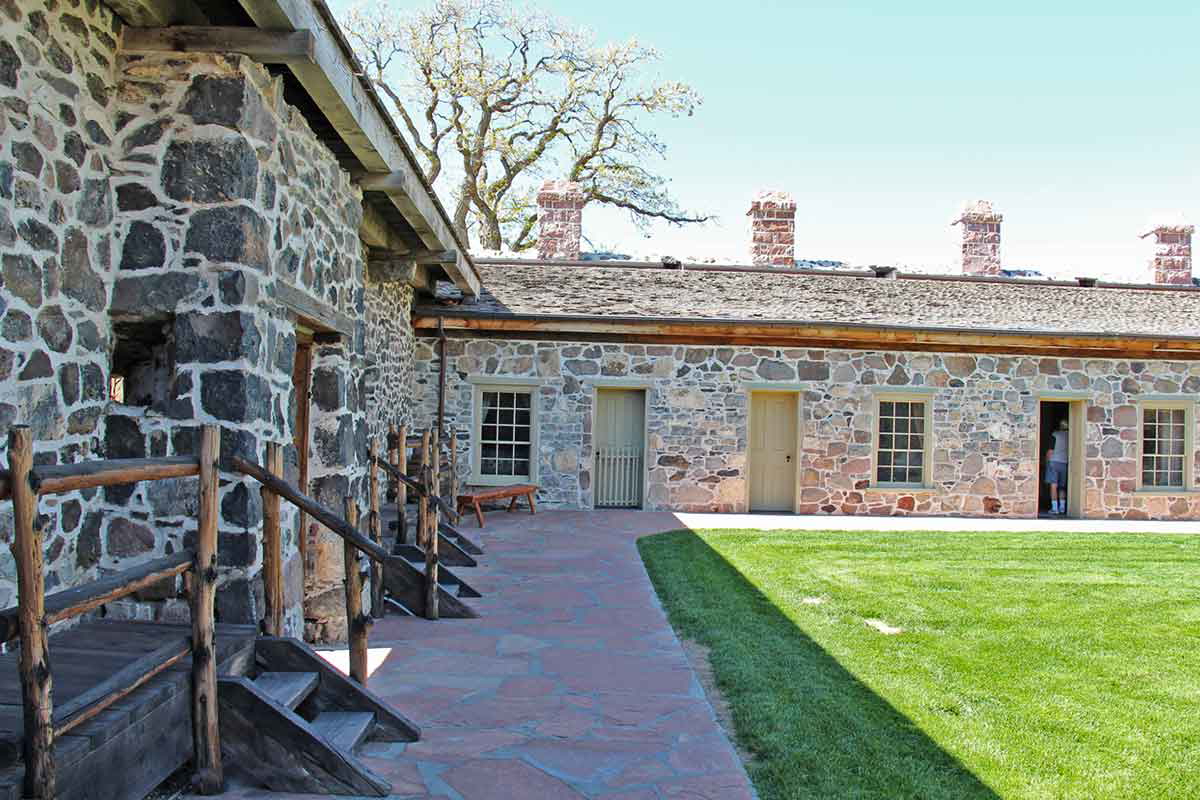
From Ancestor Square, take the 1-15 north past Cedar City and Beaver until you reach a ghost town called Sulphurdale, located in Millard County, Utah. Brigham Young, the Mormon pioneer who established St George, selected the site for Cove Fort as it sits between Beaver and Fillmore, which was back then the capital of the Utah Territory.
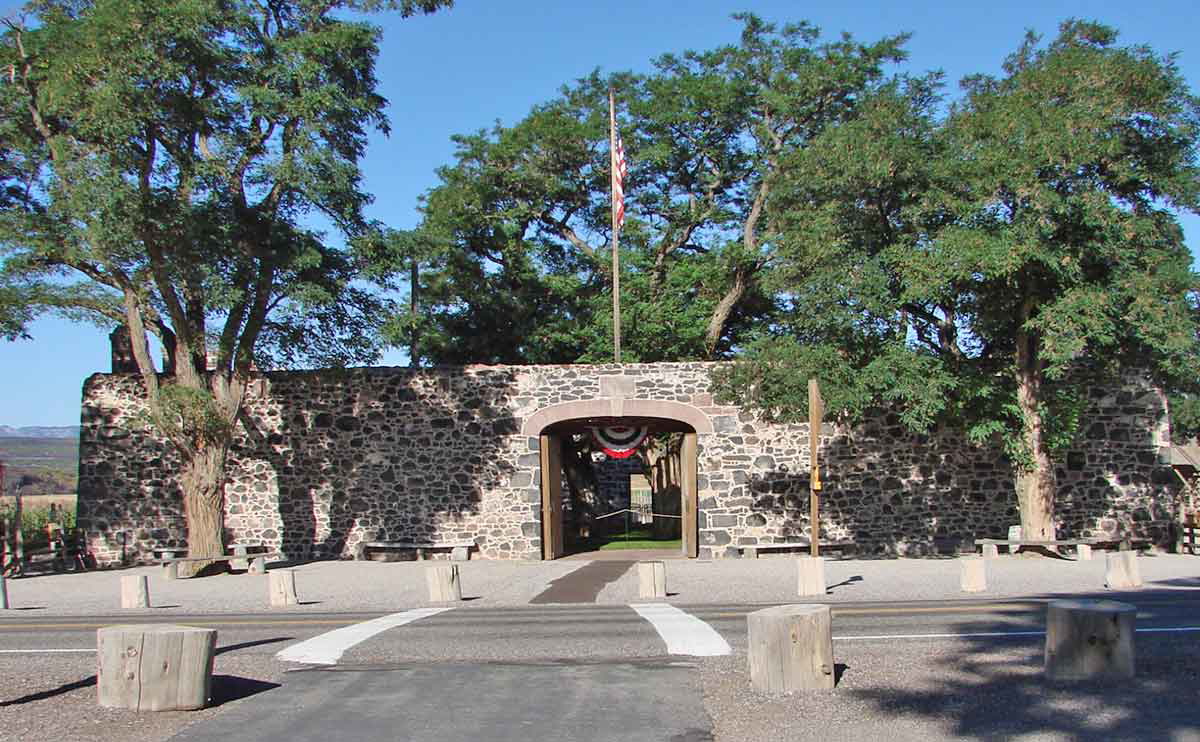
The fort, constructed with stone quarried from mountains nearby, is laid out in a square, with each wall about 30 meters long. The walls, made up of dark limestone and black volcanic rock, hold a distinct coloring and pattern. The stone construction is key to its survival over the years and the quality condition in which it stands today. Many other forts were made of wood and have not survived. Many travelers used the fort as a place to rest and eat during long journeys. It would serve food to up to 75 people at any single time. There was also a resident farrier or blacksmith who shod oxen and horses and likely repaired the wheels of wagons too.
The fort underwent some restoration in 1988 and was opened as a historic site. Today, it offers regular tours and is a fascinating look into the area’s recent history.
4. Albert Fisher Mansion and Carriage House, Salt Lake City, Utah

Drive two and a half hours northbound on the 1-15, past Utah Lake, situated to the east of Provo, and arrive in the heart of Salt Lake City, the capital of Utah. You’ll arrive at Fisher Mansion to discover the story of Albert Fisher. Born in Germany in 1852, he moved to Salt Lake City in his 20s. Albert was a brewer by trade.
In 1869, the transcontinental railroad connected the Atlantic with the Pacific. The Mormons wanted to keep all their gold coins from going east, so they became a self-sufficient community, building furniture, firearms, and any other product they needed. Along with all these new businesses, the Mormons also brewed their own alcohol, and it was at the Mormon brewery where Albert Fisher would become a Brewmaster.
After a falling out with the other Mormons, Fisher sought an investor, purchased 15 acres of land on the east bank of the Jordan River, and built his own brewery, Fisher Brewing Company. His home, Fisher Mansion, is open to the public and offers a look into how Albert lived at the time. The company was closed during prohibition, reopened in 1934, and sold in the 1950s. It was revived in 2017 by Tom Fisher Riemondy, great-great-grandson of Albert Fisher.
5. Bear River Massacre Site, Idaho
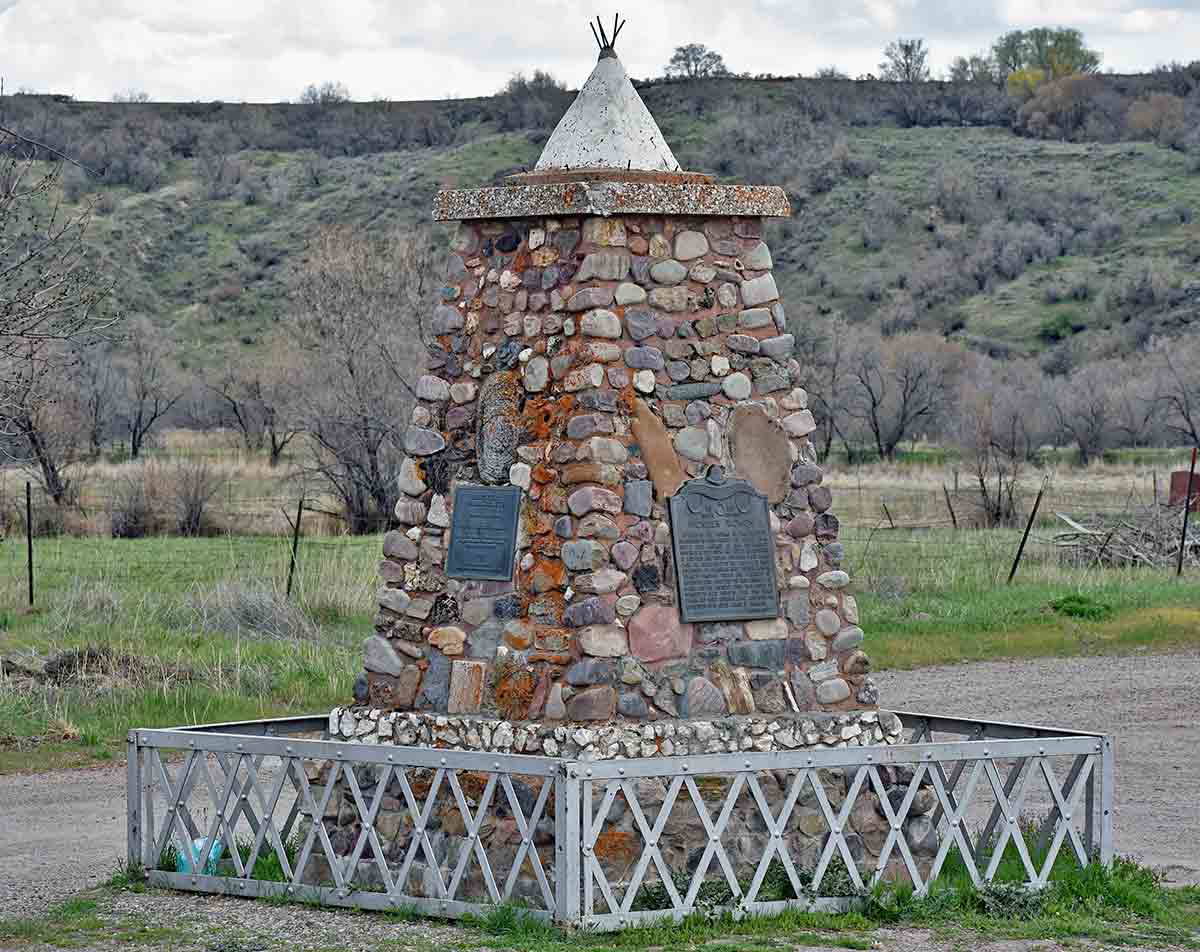
Leaving Fisher Mansion and driving north, past the Great Salt Lake, after two hours, you will cross the border into Idaho and pass over a river called Bear River. Nestled between Preston and Winder, you will first reach the Bear Massacre Site and, further along, Bear River Memorial Park.
On January 29, 1863, the United States Army, led by Patrick Edward Connor, attacked an encampment belonging to the native Shoshone tribe. Bear Hunter, a Shoshone Chief of the Great Basin, led the defense and was killed in action. The massacre has many names: “the Engagement on the Bear River,” the “Battle of Bear River,” and the “Massacre at Boa Ogoi.” It is appropriately named a massacre as hundreds of Shoshone children, women, and men were killed, compared to some 21 losses sustained by the United States Army.
The attack on the encampment followed a history of rising tensions between the native Shoshone and the Mormon settlers, the latter who were consuming significant food resources and forcing the Shoshone to move to areas where food was scarce. Although Brigham Young did encourage his settlers to “feed rather than fight,” the Shoshone suffered terrible famines and were left destitute. From the time of their first regular interactions with these new settlers in 1847 through to the outbreak of the Civil War in 1861, relations grew increasingly fraught, with a young Shoshone man called Pugweenee being hung on the belief he had stolen a horse and the Shoshone retaliating days later by killing young settlers.
According to Connor, several fights and skirmishes ensued before the US Army launched a full attack on the encampment, capturing 175 horses, destroying 70 lodges and wheat supplies, and capturing 160 women and children. Settlers claimed that the number of children and women who survived the onslaught was far fewer than Connor had reported.
Today, it is possible to visit the memorial site, which has a monument in memory of the victims of the massacre. The area is a sacred burial ground for the Shoshone people.
6. Fort Hall Replica and Commemorative Trading Post, Idaho
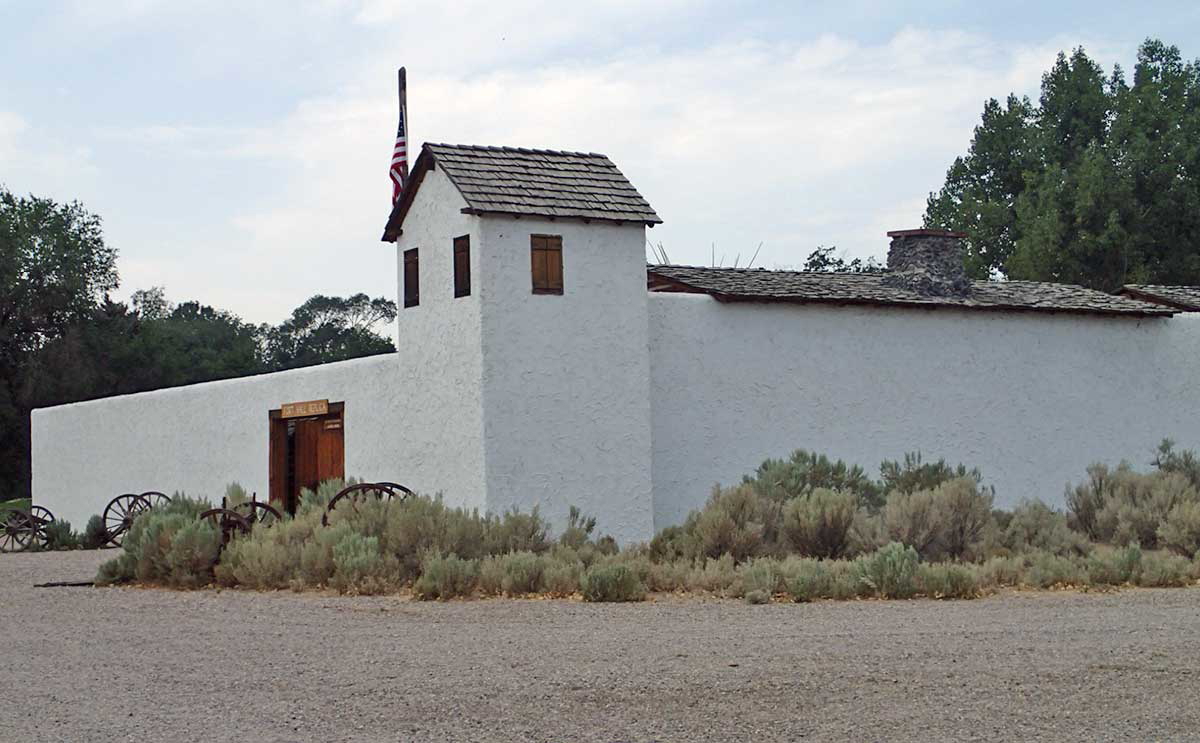
An hour north of the Bear River Massacre Site is the Fort Hall Replica and Commemorative Trading Post, built in 1834. It served as a trading post until it was demolished in 1863. The replica that now stands in its place gives insight into the 19th-century lifestyle of the Indigenous Americans, pioneers, and travelers passing through the area. In its day, the fort saw gold seekers, fur traders and trappers, and other prominent figures pass through its gates.
The replica was built using descriptions from people who had visited the original building, along with the original plans from the Hudson Bay Company. Keeping true to the original, the replica was constructed using traditional methods and effectively built by hand.
Fort Hall is open from June through September.
7. Menor’s Ferry Historic District, Wyoming
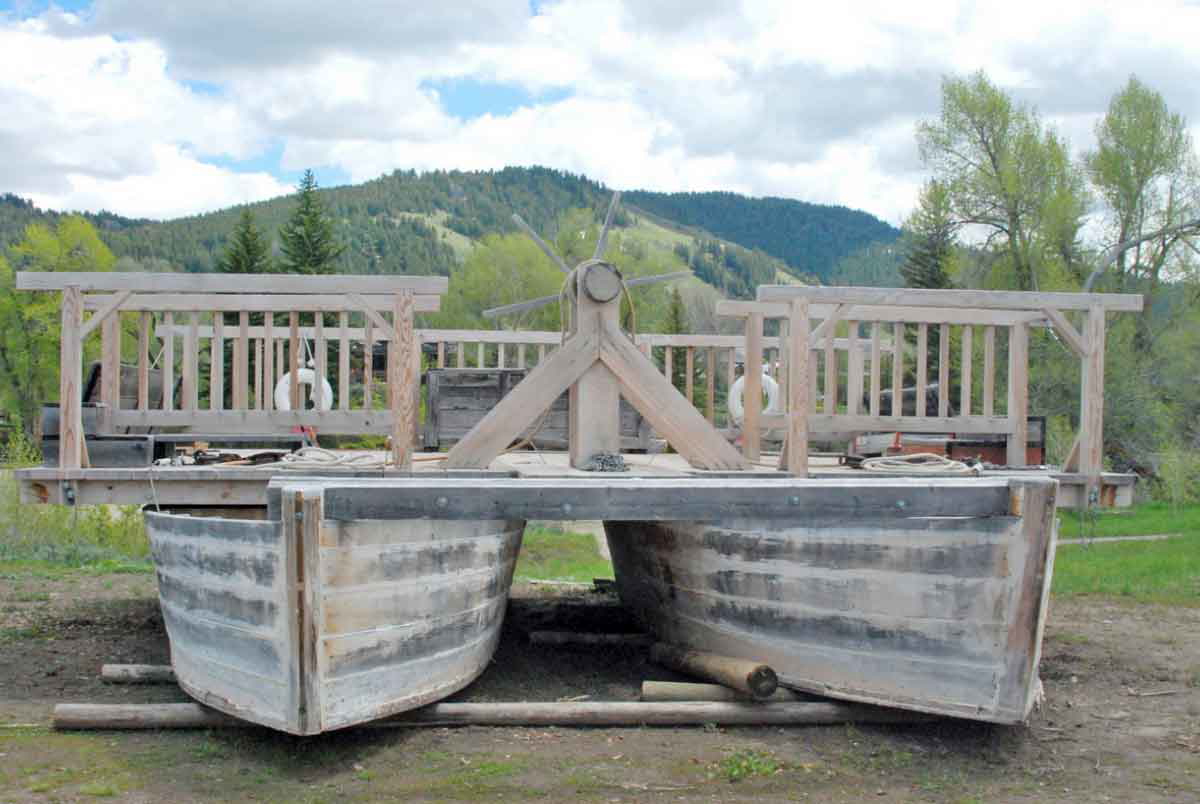
Three hours northeast of Fort Hall, across the state border into Wyoming, you will find Menor’s Ferry Historic District. Situated on the west side of the Snake River is a replica of a country store, the original of which was erected by William D Menor, who arrived in Jackson Hole in 1894. He built his homestead there and constructed a ferryboat, a replica of which can also be seen on site. This ferryboat became a vital means for crossing the Snake River, which became impassable in many places during periods of high water. Many residents used the ferryboat to cross the river and collect timber, gather food, and hunt wildlife.
The ferryboat consists of two pontoons carrying a simple platform, with cables looped through the boat to prevent it from being washed downriver. For 50 cents, a wagon and team could cross, and it was only 25 cents for a horse and rider. When the river became too low, a cable car was available for up to four passengers. Although the homestead was originally built to tap into the area’s natural resources, Bill Menor and his small community of neighbors fell in love with the beauty of Jackson Hole.
8. Fort Ellis Historical Marker, Montana
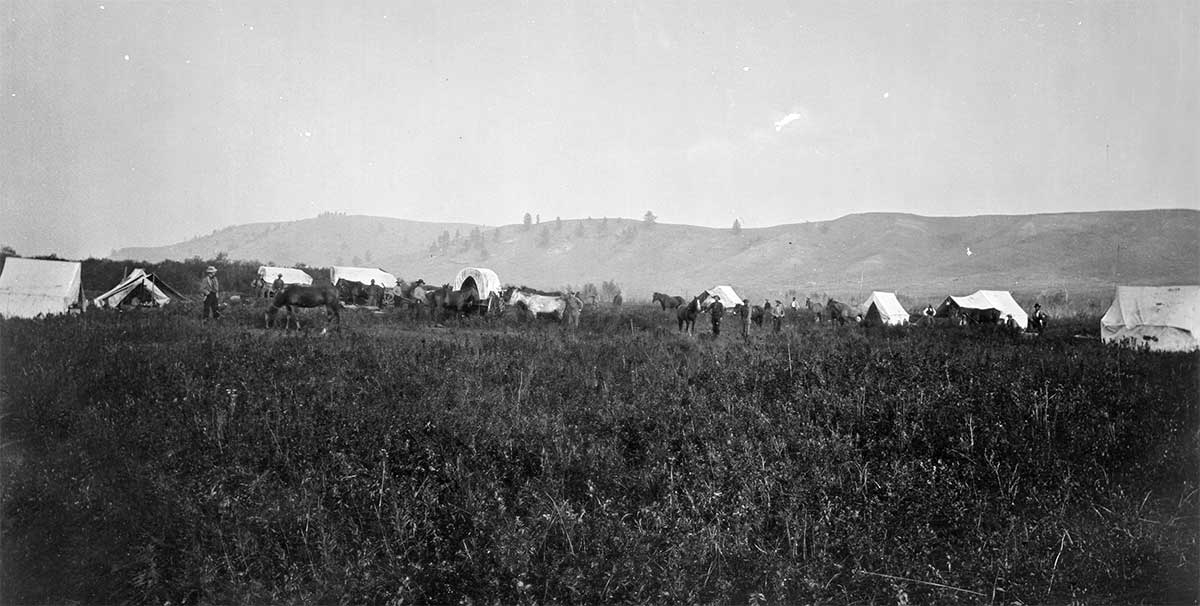
Like the history of Bear River, Fort Ellis saw much conflict between Native Americans and new settlers. Just over four hours north of Menor’s Ferry, through Yellowstone National Park, and across the state lines into Montana is the land where Fort Ellis once stood.
Three tribes–Lakota, Northern Cheyenne, and Arapaho–struggled with the growing presence of the settlers back in the mid-1800s, who flowed in great numbers through their territory. In a bid to control their newfound trails, such as the Bozeman Trail, which connected southern Montana (gold rush territory) to eastern Wyoming (the Oregon Trail), the US Army launched military campaigns targeting the Indigenous tribes of the area. In addition to these campaigns, the US Army built forts to support their military presence. Following the death of John Bozeman in 1867 at the hands of Native Americans, Fort Ellis was constructed in the same year.
The fort would become a key location for the next 20 years, with soldiers regularly manning it. Fort Ellis was to feature in the Battle of the Little Bighorn in 1876 and the Battle of the Big Hole in 1877 as an outpost for fighting US soldiers.
Many visitors now pass through this corridor today to access Yellowstone National Park, ski the mountains, and fish and hunt. Fort Ellis no longer stands, but a historical marker signposts its place, and it is a great place to stop and take a moment to remember the area’s history.
9. Fort Connah, Montana
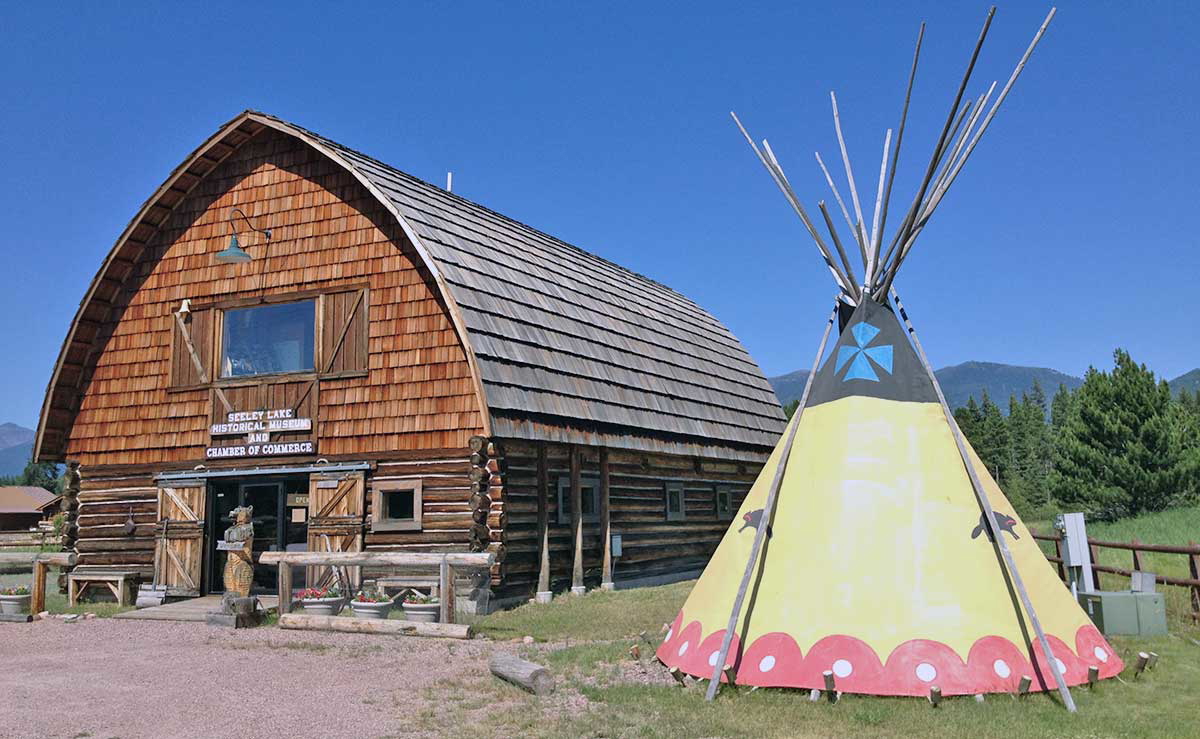
Four hours northwest of Fort Ellis is Fort Connah, a cluster of three buildings, one of which–the storehouse–is an original construction and thought to be possibly the oldest building in Montana. The fort was largely active between 1846, when it was first erected, and 1871 as a Hudson Bay Trading Post. Of the two replica buildings, one is a log cabin from the 1870s that has undergone renovation, and both cabins now reflect how the trading post would have looked some 170 years ago.
This location marks the last of the trading posts in present-day US territory, and it was built by Angus McDonald, who was Scottish. He gave the name “Connen” in honor of a river valley in his Scottish homeland; however, he changed the name to “Connah” shortly after, as it was easier for the Native Americans, including the Kootenai, Pend d’Orielle, and Salish tribes, to pronounce.
Prior to 1910, when settlers were encouraged to migrate to the area, the prairie had not seen a plow. It was largely home to local Native American tribes, who used the trading post up until 1871, at which point the US government forced Hudson Bay Trading to abandon it.
It is possible to visit the area year-round; however, the three buildings of the fort and cabins are only open to the public between April and October, with visitations available by appointment.







